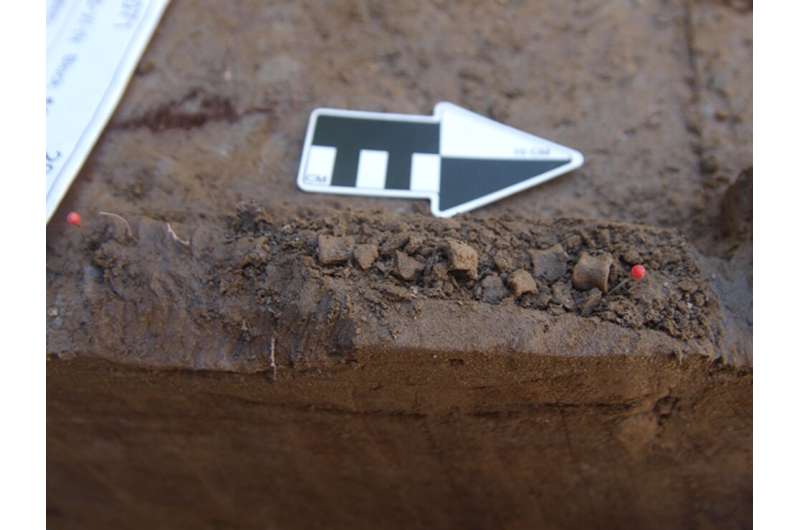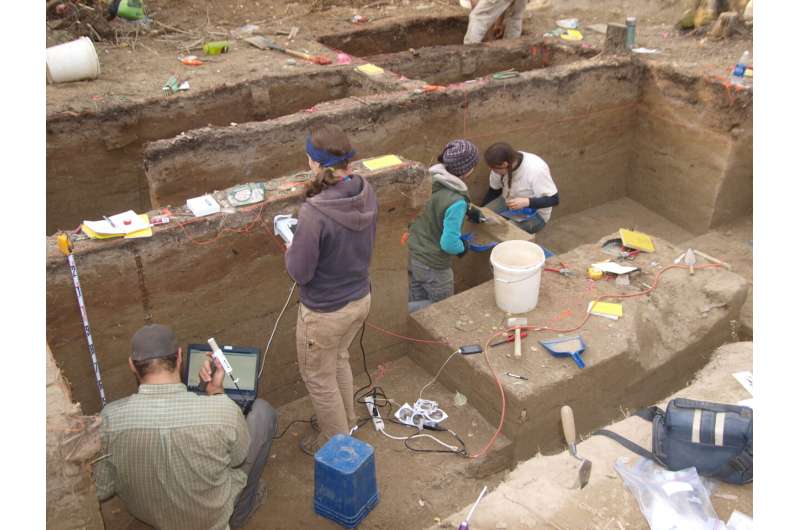June 6, 2023 report
This article has been reviewed according to Science X's editorial process and policies. Editors have highlighted the following attributes while ensuring the content's credibility:
fact-checked
peer-reviewed publication
trusted source
proofread
Native populations survived the Younger Dryas by switching from big game to fishing

Research led by the Department of Anthropology at the University of Alaska in Fairbanks has delved into the freshwater fishing practices of ancient Native Americans. In the paper, "Freshwater and anadromous fishing in Ice Age Beringia," published in Science Advances, the anthropologists detail zooarchaeological and biomolecular analyses of fish remains from several archaeological sites in eastern Beringia, a region of western Alaska.
The team sifted through all known sites older than 7,000 years for reports of fish. Ten sites were identified, all from the middle Tanana basin, where the Tanana River runs through before connecting to the larger Yukon River. Eight sites had materials available for study, with seven dating from the Younger Dryas ~11,650 to 12,900 years old.
A total of 1,110 fish specimens were identified, all of them Actinopterygii (ray-finned fishes). Of these, 627 (56%) could be identified to a taxonomic level. Identified fish included salmon (34%), burbot (58%), whitefish (7%), and northern pike (<1%).
All of these fish are still caught today in the Tanana and northern North America. The authors note an absence of grayling, char and longnose suckers, despite those fish currently inhabiting the river. Also interesting, all identified fish before 11,800 years ago are freshwater fish, which might hint at a connection to environmental climate change associated with the Younger Dryas event.
The Younger Dryas is a climate-driven extinction event. The planet was leaving a prolonged ice age, continental glaciers were receding, and humans and megafauna were expanding into new territories. Then suddenly, a climactic shift thrust temperatures back into an ice age in the Northern Hemisphere.

When it was over, most of the large mammals of the Americas were gone. Horses, camels, giant sloths, saber-toothed cats, dire wolves, short-faced bears and the wooly mammoth all went extinct. There were also significant reductions in the millions of bison, deer, caribou and moose populations, all frequently hunted by the megafauna predators that vanished.
Far too many large animals disappeared too quickly across the North American continent for it to have been at the hand of human hunters. Clovis culture, the most technologically advanced big game hunters on the planet, largely abandoned their big game hunting implements at this time.
The intensity of fishing in the Tanana River basin shows up during the Younger Dryas, and then as quickly as it appears, it diminishes. While the practice of fishing eventually becomes an essential part of native subsistence, the evidence in the study suggests that the switch to fishing was in response to big game disappearing from the landscape, illustrating the adaptability of humans to change with the environment.

The current study shows evidence that the ancient native Beringians increased their reliance on fishing during the Younger Dryas time frame.
What is not part of the study is the mystery of another Younger Dryas survivor—brown bears. While many large predatory mammals were dying off, including the massive short-faced bear known to hunt large prey, brown bears survived. Like humans, these bears were more adaptable eaters and, perhaps most importantly in light of this study, good at fishing.
More information: Ben A. Potter et al, Freshwater and anadromous fishing in Ice Age Beringia, Science Advances (2023). DOI: 10.1126/sciadv.adg6802
Journal information: Science Advances
© 2023 Science X Network




















